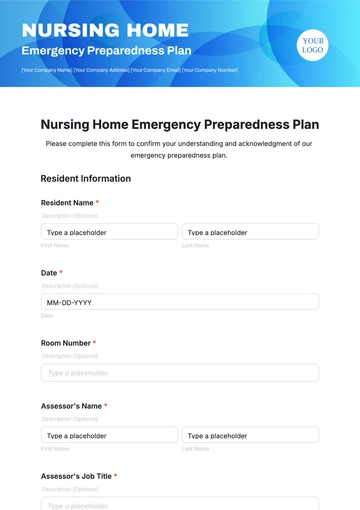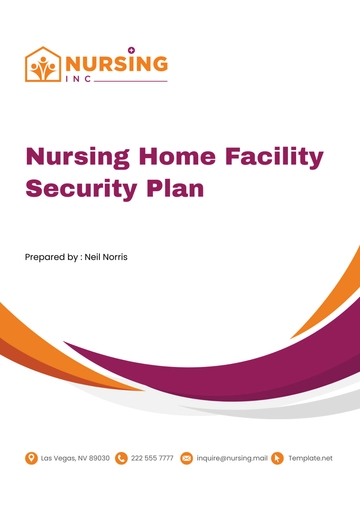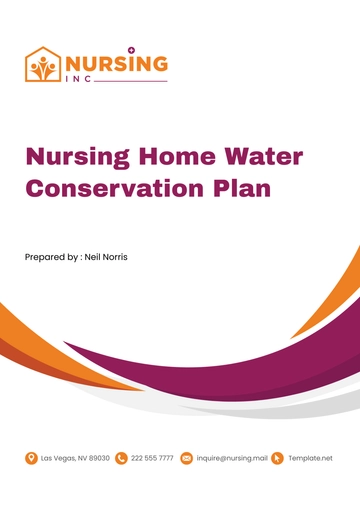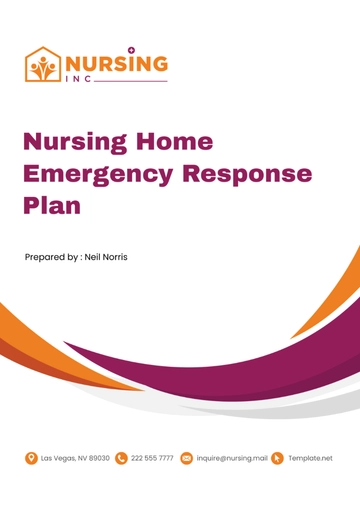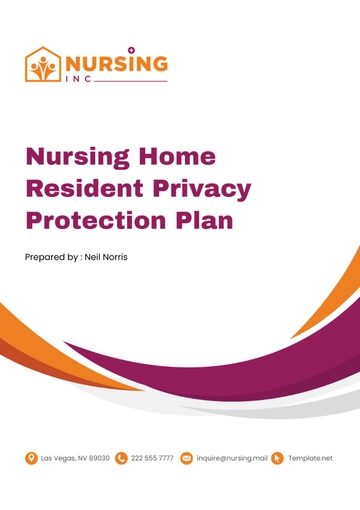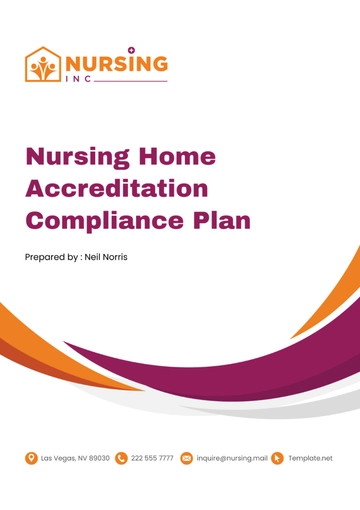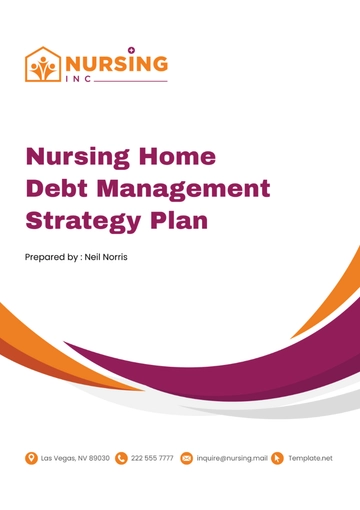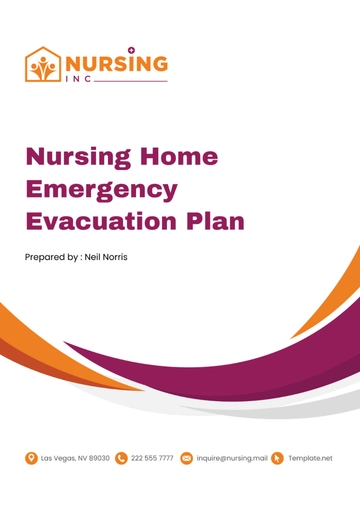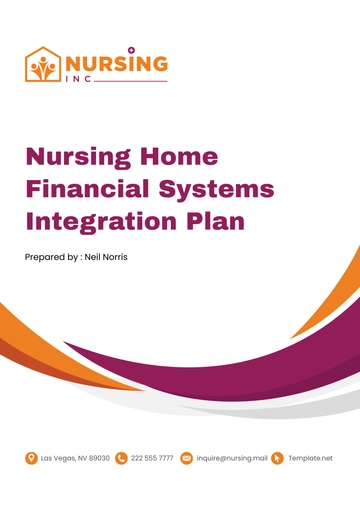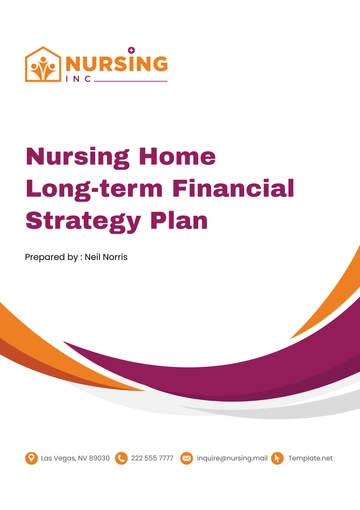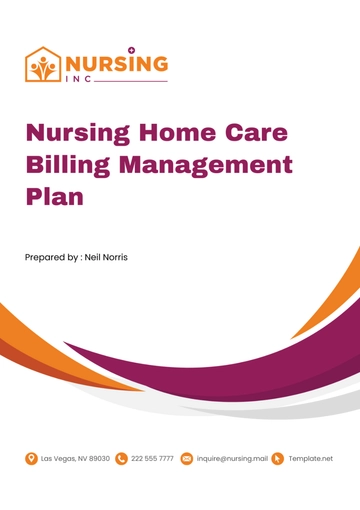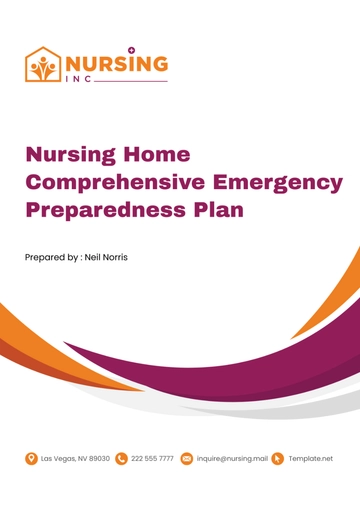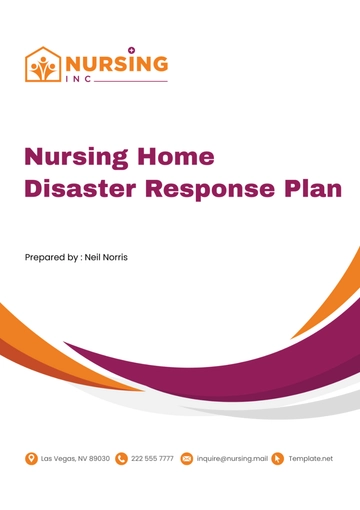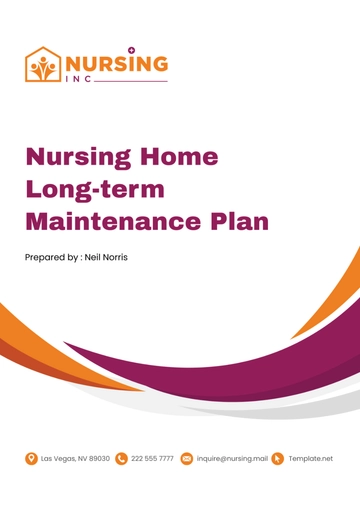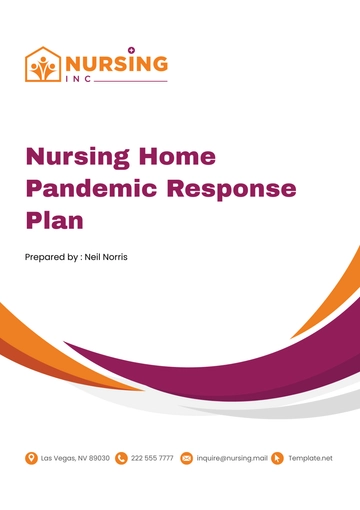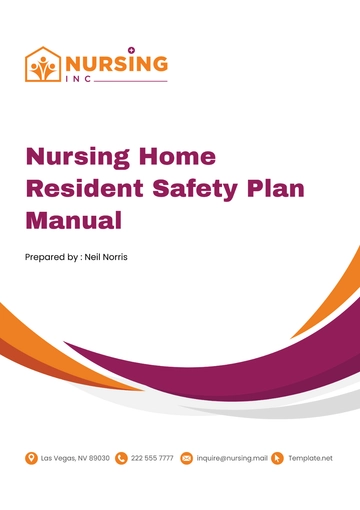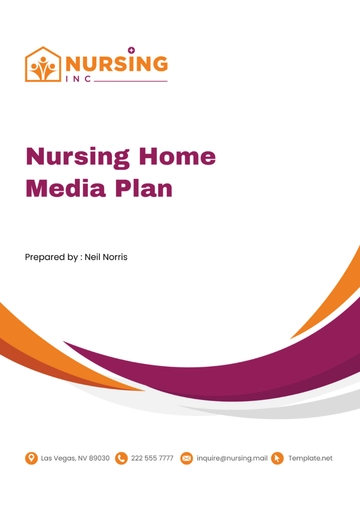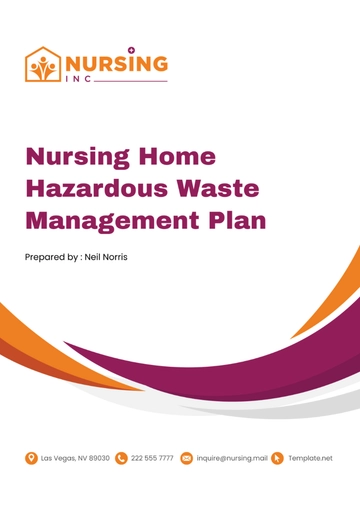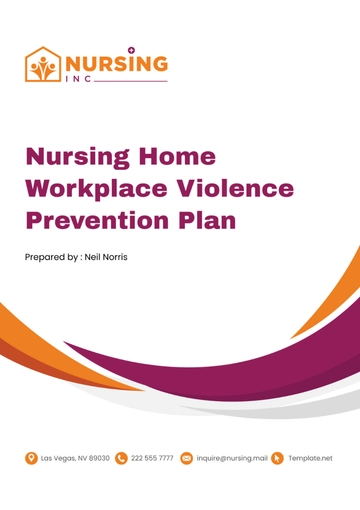Free Nursing Home Capital Budgeting Plan
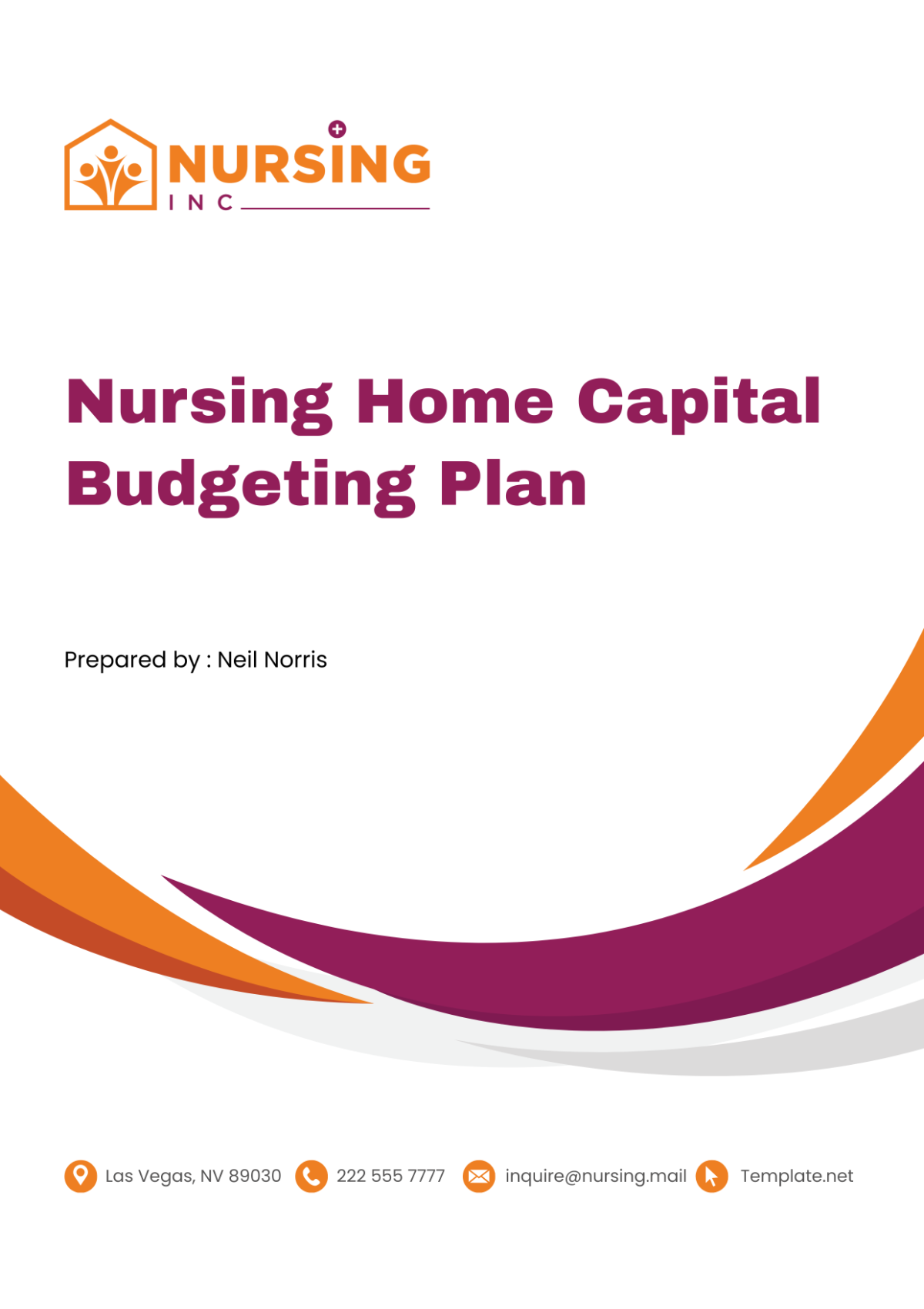
Introduction
Welcome to the Capital Budgeting Plan Template for [Your Company Name]. This document is designed to guide the planning and execution of capital investments within our nursing home facilities. Capital budgeting is a critical component in ensuring that our facilities not only maintain but also improve their ability to provide high-quality care through strategic investments in equipment, technology, and infrastructure.
I. Overview of Capital Budgeting
Capital budgeting at [Your Company Name] is a strategic financial management process used to evaluate and select long-term investments critical to our ongoing development and service enhancement. These investments generally involve acquiring new equipment, expanding facilities, undertaking significant renovations, and adopting innovative technologies that push the boundary of care quality and operational efficiency.
Purpose
The purpose of this capital budgeting plan is multifaceted and vital to our sustained growth and relevance in the healthcare sector:
Aligning Expenditures with Strategic Goals: We ensure that every capital expenditure is directly tied to our broader strategic objectives, facilitating deliberate and thoughtful investment that drives our mission forward.
Optimizing Financial Resources: By scrutinizing each potential investment for maximum financial and operational return, we ensure the judicious use of our resources, emphasizing sustainability and long-term financial health.
Enhancing Care Quality: The primary goal of our capital investments is to enhance the quality of care we provide. Each investment is evaluated not only through its financial lens but also by its impact on patient care and service delivery, ensuring we continue to meet and exceed the expectations of those we serve.
II. Capital Budgeting Process
Effective capital budgeting involves a structured approach that encompasses several key steps to ensure that each investment is strategic and yields the anticipated benefits:
Identification of Potential Investments:
Department heads and senior management play a pivotal role in identifying potential capital projects. This initial step involves a thorough assessment of operational needs, technological advancements, and strategic alignment with our long-term goals.
Project Evaluation:
Each identified project undergoes a rigorous evaluation to determine its feasibility and alignment with [Your Company Name]'s strategic vision. This evaluation considers the cost, potential benefits, and how well the project integrates with our long-term goals. Financial models, such as Net Present Value (NPV) and Return on Investment (ROI), are commonly employed to quantify potential financial returns and assess risk.
Budget Allocation:
Once a project passes the evaluation phase, budget allocation is determined based on available financial resources, projected cash flows, and prioritization of projects within the capital budget. This ensures that our most critical needs are addressed first and that spending is kept within our financial means.
Implementation:
The approved projects are meticulously planned and executed according to a predetermined timeline and budget constraints. Project managers are assigned to oversee the implementation process, ensuring adherence to schedules, budgets, and specifications.
Performance Monitoring:
Post-implementation, the performance of each project is continuously monitored against the expected outcomes. This ongoing evaluation helps identify any deviations from the projected benefits and allows for timely adjustments to maximize returns.
III. Capital Expenditure Guidelines
Criteria for Capital Expenditures:
To qualify for capital investment, projects at [Your Company Name] must meet stringent criteria designed to ensure they bring substantial value and align with our operational needs and compliance standards:
Longevity: Projects should have a useful life of more than one year, supporting long-term strategic benefits rather than immediate, short-term gains.
Enhanced Care Quality: Investments must directly or indirectly enhance the quality of care provided to our residents, such as through advanced medical equipment or improved facility environments.
Financial Return: Projects should offer a reasonable rate of return or potential for significant cost savings, ensuring financial viability and sustainability.
Regulatory Compliance: All investments must adhere to healthcare regulations and enhance safety standards, maintaining our commitment to regulatory compliance and resident safety.
Approval Process:
The approval process for capital expenditures is thorough and involves several key stages:
Submission of Proposal:
Detailed project proposals are required from department heads, outlining the project's objectives, costs, benefits, and strategic alignment. These documents are critical for informed decision-making.
Review by Finance Committee:
Our finance committee rigorously reviews each proposal to validate its financial assumptions, strategic alignment, and potential impact on our financial health.
Approval by Senior Management:
Final approval rests with senior management, who consider the organization’s overall strategy, financial status, and long-term goals when making their decision. This holistic approach ensures that all capital expenditures are not only financially sound but also integral to our mission and vision.
By adhering to this comprehensive capital budgeting process, [Your Company Name] ensures that each investment is thoughtful, strategic, and conducive to our overarching goal of providing exceptional care through sustainable growth and innovation.
IV. Budgeting and Funding
Annual Budget Planning
At [Your Company Name], capital budgeting is a critical component seamlessly integrated into our annual budget planning process. This integration ensures that every dollar allocated aligns with our strategic goals, maximizing both short-term and long-term financial returns. The process begins with a comprehensive review of the previous year's expenditures and outcomes, followed by adjustments to reflect the evolving needs and strategic directions of our facilities. Each potential capital project is scrutinized for its potential to enhance operational capacity or efficiency, ensuring that resources are directed toward the most beneficial investments.
Sources of Funding
To finance our capital projects, [Your Company Name] explores various funding sources, each selected based on its suitability to the project's nature and the company’s financial strategy:
Retained Earnings: Utilizing profits carried over from previous years is often prioritized for projects expected to generate significant returns on investment.
Long-term Loans: For larger projects that require substantial capital outlay, such as facility expansions, long-term financing options are considered to spread out the expenditure impact.
Grants: We actively seek grants for projects that align with governmental or non-governmental organizational goals, such as technology upgrades or enhancements that improve patient care.
Fundraising Activities: Engaging the community through fundraising can be an effective way to support projects that have a direct positive impact on resident experiences and care.
Table 1: Projected Capital Expenditures for [Fiscal Year] outlines the anticipated costs and benefits associated with key projects for the upcoming year, providing a clear view of how funding sources are matched with capital uses.
Project Title | Description | Estimated Cost | Expected Benefits | Funding Source |
Facility Expansion | Addition of new resident rooms | $500,000 | Increase in resident capacity | Long-term loans |
Medical Equipment | Purchase of new MRI machine | $300,000 | Enhanced diagnostic capabilities | Retained earnings |
IT Upgrades | Implementation of new software systems | $200,000 | Improved operational efficiency | Grants |
V. Implementation Plan
Project Execution
Successful execution of capital projects at [Your Company Name] requires meticulous planning and coordination. Each project is mapped out with a detailed implementation plan that includes a clear timeline, key milestones, and designated responsibilities. This structured approach ensures that projects remain on schedule and within budget, while also adapting flexibly to any unforeseen challenges.
Project Timeline: Establishes the overall duration of the project from start to finish.
Key Milestones: Critical checkpoints are set to review progress and make necessary adjustments.
Assigned Responsibilities: Clear delineation of roles ensures that team members know their specific duties and responsibilities, fostering accountability and streamlined project management.
Table 2: Implementation Plan Overview provides an at-a-glance schedule of major capital projects, including start and end dates, milestone markers, and project leads, facilitating easy monitoring and adjustments.
Monitoring and Evaluation
Regular reviews of project progress are essential. These evaluations help in identifying deviations from the plan early, allowing for prompt corrective actions. Continuous monitoring not only assures the adherence to budget and timelines but also evaluates the effectiveness of the project management strategies in place.
Project Title | Start Date | Milestone Dates | End Date | Project Lead |
Facility Expansion | Jan 1, [Year] | Apr 1, Jul 1 | Dec 31, [Year] | Jonathan Wilkins |
Medical Equipment | Feb 1, [Year] | Installation by Jun 1 | Aug 31, [Year] | |
IT Upgrades | Mar 1, [Year] | Phase 1 by May 1 | Oct 31, [Year] |
VI. Review and Adjustments
Annual Review
Each year, [Your Company Name] conducts a thorough review of all capital projects to assess their impact and effectiveness. This review is crucial not only for measuring success against initial forecasts and objectives but also for gathering insights that can influence future capital budgeting decisions. Projects are evaluated on their contribution to the company’s strategic objectives, their return on investment, and their impact on improving patient care.
Feedback and Continuous Improvement
The feedback mechanism at [Your Company Name] involves gathering insights from both staff and residents about the impact and effectiveness of newly implemented projects. This feedback is systematically collected through surveys, interviews, and informal conversations, then reviewed to gauge satisfaction and identify areas for improvement. It is essential for driving continuous improvement, ensuring that our capital investments truly enhance the quality of care and operational efficiency.
By maintaining a robust review and feedback system, [Your Company Name] not only optimizes current project outcomes but also sets a strong foundation for future planning and investment, ensuring sustained growth and innovation in providing top-tier care.
Conclusion
This Capital Budgeting Plan Template provides a structured approach to managing significant investments at [Your Company Name]. By following this template, we ensure that our capital expenditures not only meet the current needs but also pave the way for future growth and improvements in the quality of care provided.
Nursing Home Templates @ Template.net
- 100% Customizable, free editor
- Access 1 Million+ Templates, photo’s & graphics
- Download or share as a template
- Click and replace photos, graphics, text, backgrounds
- Resize, crop, AI write & more
- Access advanced editor
Introducing the Nursing Home Capital Budgeting Plan Template by Template.net, a strategic tool for effective financial planning in nursing facilities. With our customizable and editable template, streamline the budgeting process effortlessly. Utilize our AI editor tool to tailor the plan to your facility's unique needs and goals. Simplify capital allocation and optimize resource utilization with Template.net's Nursing Home Capital Budgeting Plan Template.
You may also like
- Finance Plan
- Construction Plan
- Sales Plan
- Development Plan
- Career Plan
- Budget Plan
- HR Plan
- Education Plan
- Transition Plan
- Work Plan
- Training Plan
- Communication Plan
- Operation Plan
- Health And Safety Plan
- Strategy Plan
- Professional Development Plan
- Advertising Plan
- Risk Management Plan
- Restaurant Plan
- School Plan
- Nursing Home Patient Care Plan
- Nursing Care Plan
- Plan Event
- Startup Plan
- Social Media Plan
- Staffing Plan
- Annual Plan
- Content Plan
- Payment Plan
- Implementation Plan
- Hotel Plan
- Workout Plan
- Accounting Plan
- Campaign Plan
- Essay Plan
- 30 60 90 Day Plan
- Research Plan
- Recruitment Plan
- 90 Day Plan
- Quarterly Plan
- Emergency Plan
- 5 Year Plan
- Gym Plan
- Personal Plan
- IT and Software Plan
- Treatment Plan
- Real Estate Plan
- Law Firm Plan
- Healthcare Plan
- Improvement Plan
- Media Plan
- 5 Year Business Plan
- Learning Plan
- Marketing Campaign Plan
- Travel Agency Plan
- Cleaning Services Plan
- Interior Design Plan
- Performance Plan
- PR Plan
- Birth Plan
- Life Plan
- SEO Plan
- Disaster Recovery Plan
- Continuity Plan
- Launch Plan
- Legal Plan
- Behavior Plan
- Performance Improvement Plan
- Salon Plan
- Security Plan
- Security Management Plan
- Employee Development Plan
- Quality Plan
- Service Improvement Plan
- Growth Plan
- Incident Response Plan
- Basketball Plan
- Emergency Action Plan
- Product Launch Plan
- Spa Plan
- Employee Training Plan
- Data Analysis Plan
- Employee Action Plan
- Territory Plan
- Audit Plan
- Classroom Plan
- Activity Plan
- Parenting Plan
- Care Plan
- Project Execution Plan
- Exercise Plan
- Internship Plan
- Software Development Plan
- Continuous Improvement Plan
- Leave Plan
- 90 Day Sales Plan
- Advertising Agency Plan
- Employee Transition Plan
- Smart Action Plan
- Workplace Safety Plan
- Behavior Change Plan
- Contingency Plan
- Continuity of Operations Plan
- Health Plan
- Quality Control Plan
- Self Plan
- Sports Development Plan
- Change Management Plan
- Ecommerce Plan
- Personal Financial Plan
- Process Improvement Plan
- 30-60-90 Day Sales Plan
- Crisis Management Plan
- Engagement Plan
- Execution Plan
- Pandemic Plan
- Quality Assurance Plan
- Service Continuity Plan
- Agile Project Plan
- Fundraising Plan
- Job Transition Plan
- Asset Maintenance Plan
- Maintenance Plan
- Software Test Plan
- Staff Training and Development Plan
- 3 Year Plan
- Brand Activation Plan
- Release Plan
- Resource Plan
- Risk Mitigation Plan
- Teacher Plan
- 30 60 90 Day Plan for New Manager
- Food Safety Plan
- Food Truck Plan
- Hiring Plan
- Quality Management Plan
- Wellness Plan
- Behavior Intervention Plan
- Bonus Plan
- Investment Plan
- Maternity Leave Plan
- Pandemic Response Plan
- Succession Planning
- Coaching Plan
- Configuration Management Plan
- Remote Work Plan
- Self Care Plan
- Teaching Plan
- 100-Day Plan
- HACCP Plan
- Student Plan
- Sustainability Plan
- 30 60 90 Day Plan for Interview
- Access Plan
- Site Specific Safety Plan
